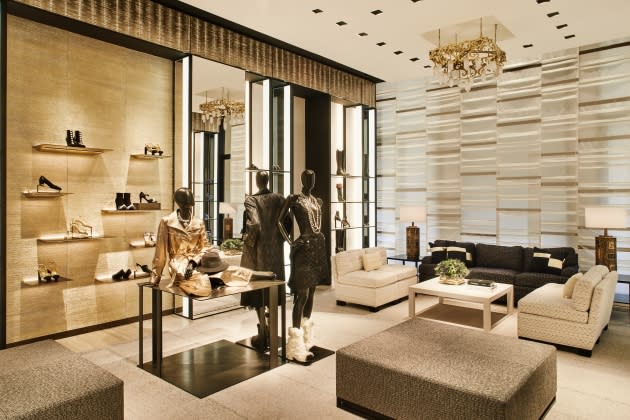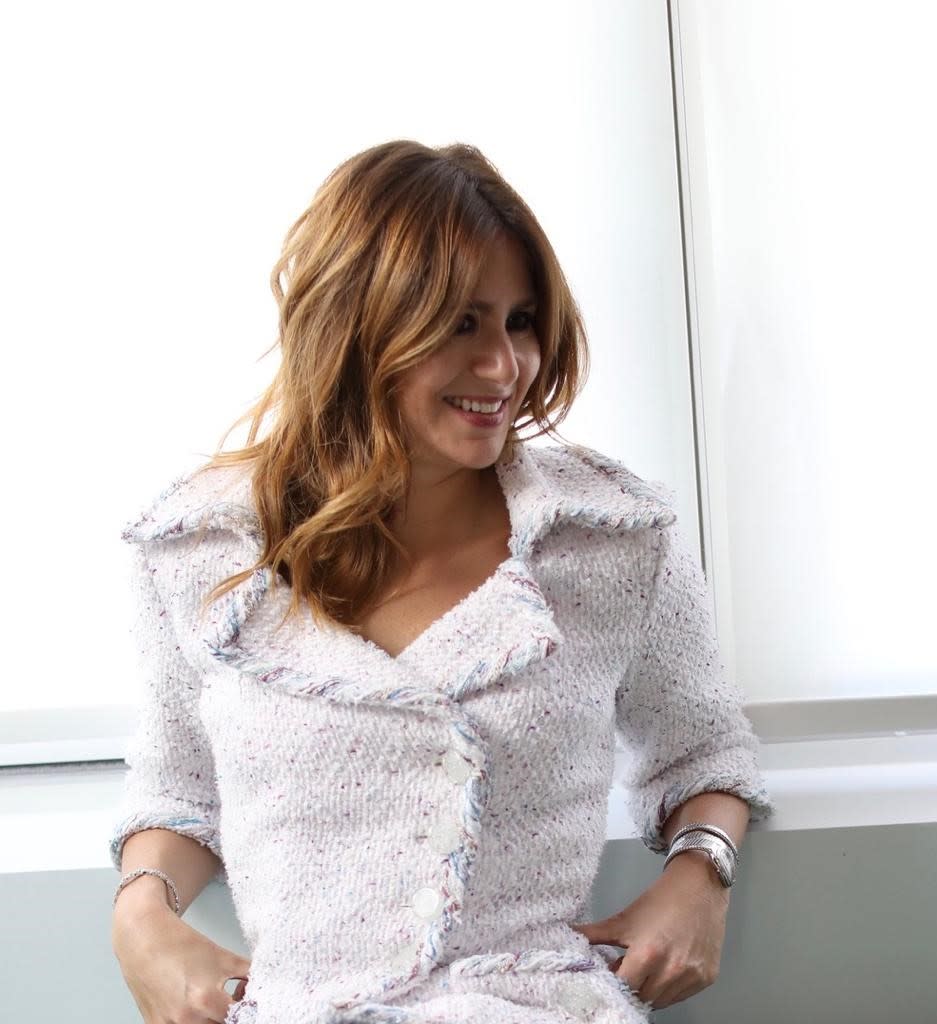The Outside View: Decisions for a Dynasty, New Leadership in Luxury

No industry has been left unscathed by the economic upheaval brought on by the COVID-19 pandemic. With rising inflation, volatile asset prices, conflict in Ukraine, and widespread cost-of-living crises affecting large portions of the population, one might be surprised to find out that the seemingly “non-necessity” items of luxury brands continue to rise in demand and desirability.
A recent Bain report estimates global sales of personal luxury goods will “reach at least 305 billion euros ($320 billion) this year, building on its fast rebound from pandemic lockdowns,” and the target-setting of leadership teams and board rooms across the sector shows no signs of slowing down.
More from WWD
What luxury brands have long known is that brand, culture and identity matter as much as product quality. Today’s leaders in the sector must walk the line between the traditional values and representations of the brand and the consumer desire for disruption and engagement beyond anything they have seen before.
This tension is even more apparent within luxury brands that carry a family name, and with that: family ties, shares and even decision-making power.
Family Business
Family-run brands are a staple of the designer-vision led fashion industry — although large conglomerates, holding companies and business magnates increasingly hold strategic and executive decision-making powers when it comes to business operations. The world-renowned names of Gucci, Christian Dior and Yves Saint Laurent have become subject to takeovers, which have ultimately eliminated any controlling influence from the original founding families, many of the world’s biggest high-fashion brands are now under the control of two French family-run groups — LVMH Moët Hennessy Louis Vuitton and Kering, led by chief executive officers Bernard Arnault and François-Henri Pinault, respectively.
Outside of the “big two,” Armani, Missoni, Salvatore Ferragamo, Chanel and Prada are all global firms where the founding families retain a controlling stake and, in many cases, positions at the top table.

Whether under new ownership, family-bound or not, the fact remains that brands with a global consumer base cannot feasibly grow and succeed against modern market demands by restricting their talent pool to a single gene pool. And succession can often become an issue if there is no suitable or willing candidate from the next generation.
An influx of private equity and capital investment has also changed what was once a family-run affair. Today, family brands often need both the expertise and resources that a private equity or institutional investor has in order to scale their business, expand and improve efficiencies. The industry saw this in July 2021, when L Catterton, a private equity firm backed by French luxury giant LVMH, agreed to buy a 60 percent stake in Italian fashion company Etro with the aim of growing the brand to become “one of the leading high-end brands across product categories.”
For these established family brands, it is important to think about a medium- to long-term approach, when choosing an external organization or private equity firm to partner with or be acquired by. This choice is crucial, as the goal should not only be cost-cutting; indeed, while this is sometimes a necessary evil, in fashion you need to think about longevity and overall vision in order to keep the brand equity strong.
At some point, even the most successful family-run firms need to engage outside leadership to ensure the company can continue to adapt to a changing world and secure the longevity of the brand. And this presents unique search and assessment challenges in itself.
A Clash of Cultures?
Hiring an outside executive into the relatively closed environment of any family business invariably creates an intriguing cultural dynamic. A 2020 study from PwC on the interaction between family firms and external leaders notes that even where the presence of the family was virtually in name only, with little hands-on involvement, the business is “often defined by the ideals and values of its founders” — regardless of how that aligns to the stakeholder demands of today, you might add.
Ultimately, the family may or may not remain involved on a brand side of things but, once sold to another multibrand group or a private equity firm, there is a shift in dynamics and priorities and that’s when you crucially need a neutral business leader to navigate between those two.
For an incoming leader, handling these cultural nuances can be a daunting or an off-putting prospect. There is a fine line between steering the company into making positive changes and failing to respect cultures and traditions that are part of the firm’s DNA and this “no-win” position can turn potential candidates away at the first engagement. For those who understand and appreciate the potential of bridging old and new, however, there’s something quite special ahead.
Change is constant, cultural fit often outweighs commercial success, and the relationship between the CEO, as a business leader, and the creative director, as the driver of the brand, is proving to be the most pivotal.
Furthermore, macro trends are creating additional demands of fashion executives. The pandemic-induced jump in e-commerce, the increasing attention around technology innovations, such as NFTs, and the continual drive to streamline and be more sustainable in manufacturing and logistics means that fluency with data and digital transformation is a minimum requirement — while also ensuring it aligns to the creative vision on the shelves.
As a result of these evolving demands, we’re seeing a broadening of the leadership talent pool. Some years ago, it was more commonplace to see well-established luxury leaders rotating between the top jobs. However, recent history shows us that industry experience is no guarantee of success and fresh challenges call for new skills. Companies, including LVMH and Chanel, have opted to hire talent from sectors outside of the tight-knit luxury sector, with a focus on driving technology or sustainability to separate a suitable candidate with a more diverse background from the competitive pack.
Aligning Expectations
To make the transition from family leadership to external CEO is a bold decision for both parties. Luxury brands can ease the transition by keeping an open mind about the need for an industry background, bearing in mind the broad skill sets needed of today’s executives. And those involved in the selection need to be realistic about the weight given to cultural fit as a critical success factor for executives from outside the sector. As such, they should also find appropriate ways to evaluate a candidate’s soft skills and ability to thread heritage and innovation with every strategic decision.
As is often the case, success is achieved where give and take brings the best of both ideals to the boardroom and the halls of headquarters. The executive must be prepared to operate within the boundaries of an established culture, but the idea that brand and reputation are prized above all else can end up becoming a barrier to the kind of changes they’d otherwise like to make.
At the heart of this sector is exclusivity, quality, desirability and creativity. Once the executive puts these values at the core of their decision-making, they can successfully establish a shared vision and road map for the long-term health and success of the brand — family name or not.
Caroline Pill is a partner in leadership advisory firm Heidrick & Struggles’ London office and a member of its consumer markets practice, focusing on the global fashion, luxury, and beauty industries.


